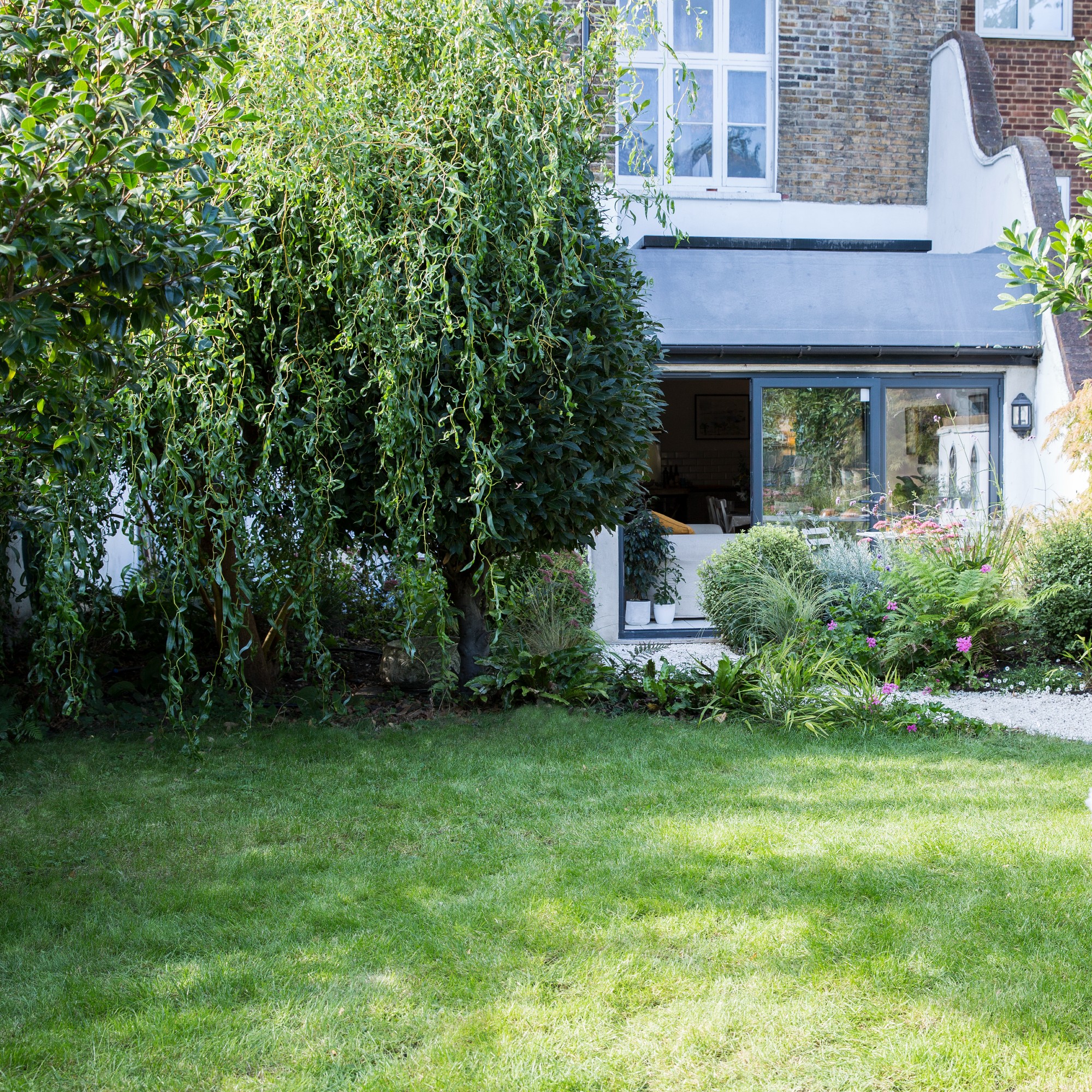Can you cut the grass in February? You can, but it comes with a warning
This is what the experts had to say


Now that the sun is starting to shine and the rain has subsided (for now), you might be wondering if you can cut the grass in February. So, we’ve put the question to the experts.
If you’re already planning your spring and summer garden ideas and have big plans for your lawn this year, you might be itching to get out there with the best lawnmower and give your grass a haircut. But choosing when to cut your grass after winter isn’t something you should take lightly. Pick the wrong time, and your lawn may suffer as a result.
So, is February the right time? We’ve asked the experts what they have to say on the matter of lawn care this month, and it’s safe to say that we have good news and bad news.
Can you cut the grass in February?
There are so many jobs to do in the garden in February, and you could add cutting the grass to your to-do list if you really wanted to. However, similarly to planting daffodils in February, you need to be cautious. In fact, most experts agree that you should cut your grass for the first time in March.
Steve Chilton, garden expert at LeisureBench, explains, ‘You can cut the grass in February, but I wouldn't really recommend it as the weather isn't quite warm enough yet in order for the grass to grow properly. By cutting it now, you run the risk of damaging the grass.’

‘The majority of grass won't grow until the outside temperature reaches 5°C, and while we may have hit that during the daytime at the moment, our nights are still very cold, and we still have freezing temperatures looming.’
Steve has also explained why waiting for the right temperature to cut your lawn is so important. He says, ‘If you cut your grass and the weather drops below freezing, your grass will find it difficult to recover and grow back effectively. This is why it's better to wait until temperatures are a bit warmer before you go for your first mow, just to be on the safe side.’
Of course, the colder evening temperatures aren’t the only cause for concern when it comes to cutting your lawn in February. You also need to consider the moisture content, the weather forecast, and whether you should cut wet grass.

Generally, experts would urge against cutting wet grass. Lucy Rhead at Gtech explains, 'If the soil is wet, you may find it difficult to mow without causing compaction or damage to the grass and ground.' And with more rain on the horizon, it's probably best to wait patiently until drier weather.
But if you can’t bear to see the overgrown grass in your garden, you could attempt to mow the lawn in February if you want to. You just need to make sure that you take precautions to protect your grass as much as possible.

Lucy has worked at Gtech for more than five years during which time she’s developed a passion for cleaning and gardening. Lucy loves learning about new product innovations, and how they can help make everyone’s lives a bit easier.

Jack Stooks, senior gardener at the King’s residence Highgrove, and speaking on behalf of Alt Index, explains, ‘If you're starting to cut the grass for the first time after the winter, you need to make sure that all the ground you're mowing is dry. You don't want to be mowing and have a mulchy mess where you're left with tyre marks all over the ground. Ideally, if you are going to mow, wait for good, sunny weather and for the grass to be dry.’
You should also take a moment to ensure that your lawnmower is on the right setting before turning it on and giving your grass a haircut. ‘Make sure you have the lawnmower on the longest setting, meaning that it's only taking away a tiny amount of grass when cutting. This is essential if you want your grass to stay healthy and prevent damage from the elements,’ says Steve.
If you do have the patience to wait until March to cut your grass, you’ll be happy to know that there are still ways to revive your lawn after winter. So, give them a whirl instead!

Steve is a passionate and knowledgeable garden expert with several years of experience within the field and has developed strong expertise for all things nature and plants. Steve is a keen educator and loves to share this knowledge with others. He strives to simplify complex garden practices and encourage eco-friendly gardening.
FAQs
Can you cut lawns in February?
Ideally, you should wait until March to cut your grass for the first time after winter. But if you’re desperate to mow the lawn, you can get away with giving your grass a slight haircut. However, you need to take precautions.
You should only mow the lawn when the temperatures are consistently above 5°C and the risk of frost has gone. It’s also important to cut your grass on a dry and sunny day and on the longest lawnmower setting possible.
What months do you not cut grass?
You should avoid cutting your grass during the winter months, which is usually early November to March. In cases where colder temperatures come early, you may need to stop cutting your grass in October.
In general, it’s good practice to stop cutting your grass when the temperatures are below 5°C as mowing your lawn during this time can prove detrimental to your grass.
So, will you be waiting until next month?
Get the Ideal Home Newsletter
Sign up to our newsletter for style and decor inspiration, house makeovers, project advice and more.

Lauren Bradbury has been the Content Editor for the House Manual section since January 2025 but worked with the team as a freelancer for a year and a half before that. She graduated with a Bachelor’s degree in English and Creative Writing from the University of Chichester in 2016. Then, she dipped her toe into the world of content writing, primarily focusing on home content. After years of agency work, she decided to take the plunge and become a full-time freelancer for online publications, including Real Homes and Ideal Home, before taking on this permanent role. Now, she spends her days searching for the best decluttering and cleaning hacks and creating handy how-to guides for homeowners and renters alike, as well as testing vacuums as part of her role as the Ideal Home Certified Expert in Training on Vacuums, having spent over 110 hours testing different vacuum models to date!
-
 Will a conservatory add value to your home and how can you maximise it?
Will a conservatory add value to your home and how can you maximise it?This is what the pros say
By Amy Reeves
-
 I’ve been looking for a new signature scent for my home and The White Company's new fragrance is the exact summer holiday smell I needed
I’ve been looking for a new signature scent for my home and The White Company's new fragrance is the exact summer holiday smell I neededSantorini smells fresh, summery and sophisticated
By Kezia Reynolds
-
 How to remove algae from garden walls in five steps – and the cleaning product experts rave about for tackling it fast
How to remove algae from garden walls in five steps – and the cleaning product experts rave about for tackling it fastExperts share their top tips for getting garden walls algae-free
By Katie Sims